| |
|
|
05.
| Modern Times, a History of the Machine |
| |

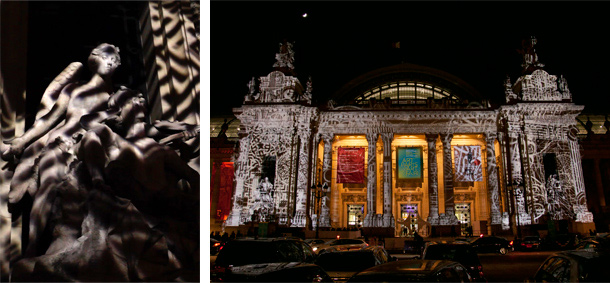
2010-2012, France, video installation, 15 min, HD, B&W, stereo. Size may vary, video projection.
Exhibition view from Art Paris, Grand Palais, 2015.
Courtesy of the artist.
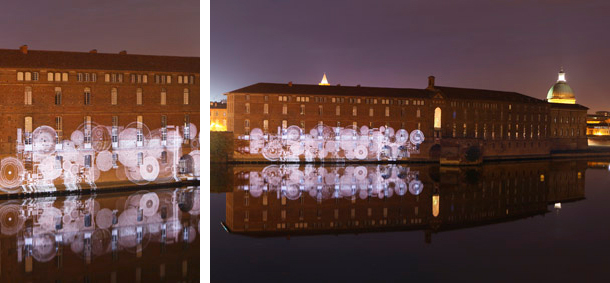
2010-2012, France,video installation,15 min, HD, B&W, stereo. Size may vary, video projection.
Exhibition view from Le Printemps de Septembre, 2012, Toulouse.
Courtesy of the artist.
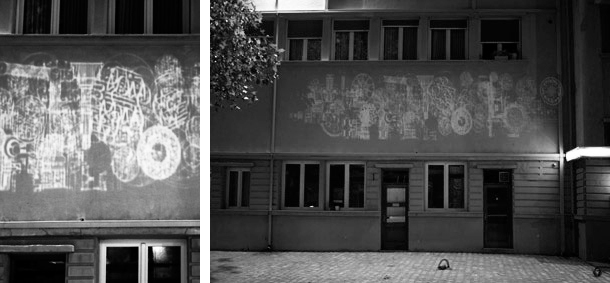
2010, France,video installation,15 min, HD, B&W, stereo. Size may vary, video projection.
Exhibition view from A rock and a Hard Place, 3rd Thessaloniki Biennial, 2011.
Courtesy of the artist.
 Video Video
'' The history of the machine as told by mounir fatmi underlines the danger of the subordination of individuals to its power, as they become reduced to mere gearwheels. Mounir Fatmi’s machine constitutes an image of the modern world,
an environment in perpetual evolution. ''
Studio Fatmi, August 2017
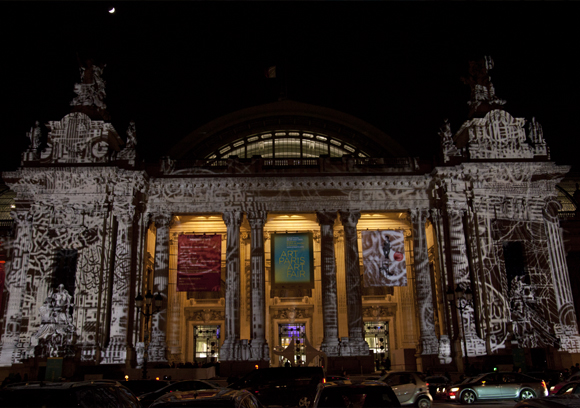
Modern Times, a History of the Machine
Exhibition view from Art Paris, Grand Palais, 2015, Paris.
Courtesy of the artist.
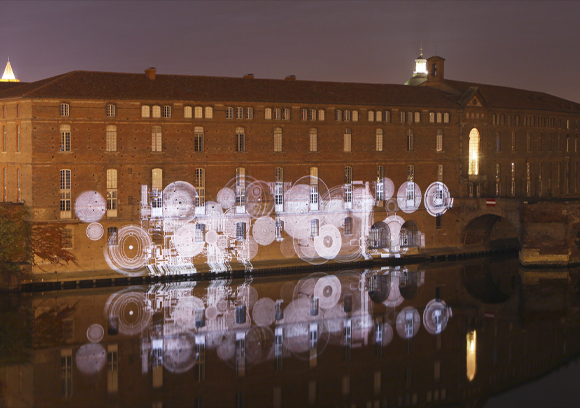
Modern Times, a History of the Machine
Exhibition view from Le Printemps de Septembre, 2012, Toulouse.
Courtesy of the artist.
|
|
|
|
|
|
|
L'installation Les Temps modernes consiste en une projection lumineuse et cinétique qui se déroule en extérieur, sur les édifices architecturaux des villes, ou en intérieur sur les murs des espaces d'exposition artistique. Elle donne à voir une ample et complexe composition géométrique mêlant des cercles en rotation, des lignes s'entrecoupant, des motifs calligraphiques circulaires et des symboles linguistiques : lettres arabes accompagnées de leur transcription phonétique universelle. L'œuvre s'accompagne d'une bande sonore tissée de distorsions acoustiques plus ou moins stridentes.
Les Temps modernes aborde la notion de machine telle qu'elle s'est constituée à partir de la révolution industrielle et de l'apparition d'outils de plus en plus complexes et automatisés. Elle interroge non seulement le renversement des relations entre l'homme et la machine à l'ère industrielle, qui a fait passer cette dernière d'une fonction utilitaire à une forme de domination et de contrôle s'exerçant sur les individus, mais elle questionne également la notion dans toute sa polysémie : à la fois outil, assemblage hétérogène produisant un effet au sens le plus large, modélisation des capacités fantasmatiques de l'être humain, ou encore désignation poétique et métaphorique du monde lui-même. Elle participe enfin à la fondation d'une figure esthétique centrale dans l'univers artistique de Mounir Fatmi, celle de la machine.
La mécanique de mounir fatmi a pour caractéristique de multiplier et d'associer les éléments les plus divers : rotoreliefs de Duchamps et motifs calligraphiques tournant tels des engrenages, figures géométriques et symboles linguistiques. Elle se constitue comme un dispositif expérimental permettant de rendre compte d'interactions culturelles complexes. Son esthétique de la profusion tend également à induire un double effet de fascination et d'égarement chez l'observateur. Ses formes séduisent autant qu'elles mettent à mal les repères visuels et les capacités de reconnaissance et d'interprétation des formes. Son dispositif sonore quant à lui, met à l'épreuve l'audition du public.
L'histoire de la machine telle qu'elle nous est contée par Mounir Fatmi met en avant les dangers de la subordination des individus à ses pouvoirs, réduits à de simples rouages. Et cependant la machine de Mounir Fatmi se constitue comme une image du monde moderne et une construction plastique permettant de penser un environnement en perpétuelle évolution. Elle incite le spectateur à produire l'effort nécessaire d'associations des signes dans le but de renouveler son rapport au réel. Langage lumineux et poésie pure, fantasme d'art total tel qu'il s'illustre dans la peinture orphique des époux Delaunay, la machine ainsi créée invente un langage nouveau capable d'exprimer la complexité du monde et son mouvement.
Studio Fatmi, Aout 2017.
|
|
The installation Modern Times consists in a luminous and kinetic projection that takes place outside on city buildings, or indoors on the walls of artistic exhibition spaces. It shows a large and complex geometric composition combining rotating circles, crossing lines, circular calligraphic motifs and linguistic symbols: Arab letters with their universal phonetic transcription. The piece comes with a soundtrack of variably piercing acoustic distortions.
Modern Times tackles the notion of the machine as it’s been shaped since the Industrial Revolution and the apparition of increasingly complex and automated tools. It not only questions the reversal of relations between man and machine during the industrial era that allowed the machine to evolve from a utilitarian function to a form of domination and control over individuals, it also questions the notion and its polysemy: tool, heterogeneous assemblage producing an effect in the widest sense, modeling of the fantasmatic capacities of humans, poetic and metaphoric designation of the world itself. Lastly, it participates in the foundation of an esthetic figure that is central to Mounir Fatmi’s artistic universe, that of the machine.
One of the characteristics of Mounir Fatmi’s mechanics is to multiply and associate extremely diverse elements: Duchamp’s rotoreliefs and calligraphic motifs that rotate like cogs, geometric shapes and linguistic symbols. It constitutes an experimental apparatus capable of transcribing complex cultural interactions. His esthetic of profuseness also tends to create a double effect of fascination and confusion in the viewer. His shapes are seductive while at the same time they challenge visual points of reference and one’s capacity for shape recognition and interpretation. As for his sound installation, it challenges the public’s audition.
The history of the machine as told by Mounir Fatmi underlines the danger of the subordination of individuals to its power, as they become reduced to mere gearwheels. Yet Mounir Fatmi’s machine constitutes an image of the modern world and a plastic construction allowing us to conceive an environment in perpetual evolution. It encourages viewers to make the necessary effort to associate signs in order to renew their relation to reality. A language of light and pure poetry, a fantasy of total art as illustrated in the orphic paintings of the Delaunay couple, the hereby-created machine invents a new language capable of expressing the complexity of the world and its movement.
Studio Fatmi, August 2017.
|
|
|
|